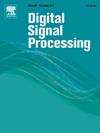Generating invisible adversarial watermarks based on block-matching embedding algorithm
IF 2.9
3区 工程技术
Q2 ENGINEERING, ELECTRICAL & ELECTRONIC
引用次数: 0
Abstract
Adversarial attack methods against Deep Neural Network (DNN) models have received extensive attention and research. Adversarial attack methods mean adding subtle perturbations to the original image to mislead the recognition ability of the DNN model. How to improve the adversarial attack performance and protect the visual effect of the perturbation image is still the main challenge in this field. Based on an image block-matching embedding algorithm, this paper proposes a novel adversarial method of embedding invisible watermarks for generating adversarial examples for deceptive DNN models. Firstly, utilizing up-sampling techniques to increase the embedding capacity of the original image while ensuring the visual quality of the watermark image. Secondly, the watermark image is embedded into the original image in a chunked manner. The cosine similarity is utilized for block-matching and combined with invertible color transformation to embed the invisible watermark. Finally, the Simple Black-box Adversarial Attack(SimBA) is used to add adversarial perturbation to the watermark image to generate the invisible adversarial watermark. The inverse operation of this method ensures the reconstruction of the original watermark information. The experimental results show that the proposed method achieves an average attack success rate of 98.33% in different neural network models (VGG19, resnet101, SqueezeNet, ShuffleNet, ConvNext, and MaxViT), with an attack success rate of 99.05% in the ShuffleNet model, demonstrating the superiority of the proposed method over existing techniques. In addition, the generated invisible adversarial watermark performs well in terms of visual effects and robustness, providing additional concealment and effectively reducing the risk of detecting adversarial attacks.
基于块匹配嵌入算法的不可见对抗水印生成
针对深度神经网络(DNN)模型的对抗性攻击方法受到了广泛的关注和研究。对抗性攻击方法是指在原始图像中加入微小的扰动,从而误导DNN模型的识别能力。如何提高对抗攻击性能,保护摄动图像的视觉效果仍然是该领域的主要挑战。基于图像块匹配嵌入算法,提出了一种嵌入不可见水印的对抗方法,用于生成欺骗性DNN模型的对抗样例。首先,在保证水印图像视觉质量的前提下,利用上采样技术增加原始图像的嵌入容量。其次,将水印图像以分块方式嵌入到原始图像中;利用余弦相似度进行块匹配,并结合可逆颜色变换嵌入不可见水印。最后,采用简单黑盒对抗攻击(SimBA)对水印图像进行对抗摄动,生成不可见的对抗水印。该方法的逆运算保证了原始水印信息的重建。实验结果表明,该方法在不同神经网络模型(VGG19、resnet101、SqueezeNet、ShuffleNet、ConvNext和MaxViT)中的平均攻击成功率为98.33%,其中在ShuffleNet模型中的攻击成功率为99.05%,表明了该方法相对于现有技术的优越性。此外,生成的不可见对抗性水印在视觉效果和鲁棒性方面表现良好,提供了额外的隐蔽性,有效降低了检测对抗性攻击的风险。
本文章由计算机程序翻译,如有差异,请以英文原文为准。
求助全文
约1分钟内获得全文
求助全文
来源期刊

Digital Signal Processing
工程技术-工程:电子与电气
CiteScore
5.30
自引率
17.20%
发文量
435
审稿时长
66 days
期刊介绍:
Digital Signal Processing: A Review Journal is one of the oldest and most established journals in the field of signal processing yet it aims to be the most innovative. The Journal invites top quality research articles at the frontiers of research in all aspects of signal processing. Our objective is to provide a platform for the publication of ground-breaking research in signal processing with both academic and industrial appeal.
The journal has a special emphasis on statistical signal processing methodology such as Bayesian signal processing, and encourages articles on emerging applications of signal processing such as:
• big data• machine learning• internet of things• information security• systems biology and computational biology,• financial time series analysis,• autonomous vehicles,• quantum computing,• neuromorphic engineering,• human-computer interaction and intelligent user interfaces,• environmental signal processing,• geophysical signal processing including seismic signal processing,• chemioinformatics and bioinformatics,• audio, visual and performance arts,• disaster management and prevention,• renewable energy,
 求助内容:
求助内容: 应助结果提醒方式:
应助结果提醒方式:


